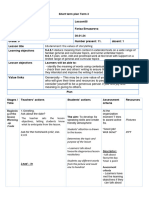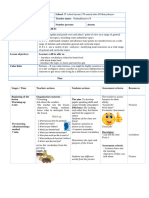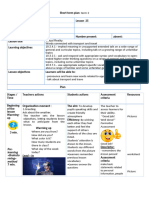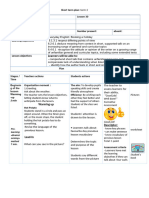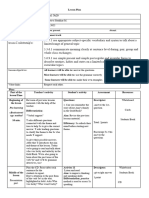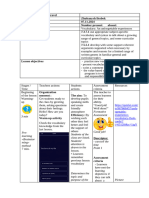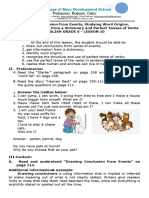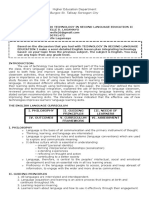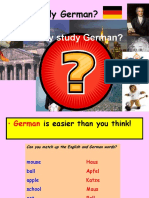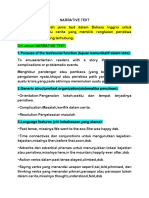0 ratings0% found this document useful (0 votes)
7 views11 Grade 13 Lesson Term 2
11 Grade 13 Lesson Term 2
Uploaded by
Nurdina DosmaganbetCopyright:
© All Rights Reserved
Available Formats
Download as DOCX, PDF, TXT or read online from Scribd
11 Grade 13 Lesson Term 2
11 Grade 13 Lesson Term 2
Uploaded by
Nurdina Dosmaganbet0 ratings0% found this document useful (0 votes)
7 views3 pagesCopyright
© © All Rights Reserved
Available Formats
DOCX, PDF, TXT or read online from Scribd
Share this document
Did you find this document useful?
Is this content inappropriate?
Copyright:
© All Rights Reserved
Available Formats
Download as DOCX, PDF, TXT or read online from Scribd
Download as docx, pdf, or txt
0 ratings0% found this document useful (0 votes)
7 views3 pages11 Grade 13 Lesson Term 2
11 Grade 13 Lesson Term 2
Uploaded by
Nurdina DosmaganbetCopyright:
© All Rights Reserved
Available Formats
Download as DOCX, PDF, TXT or read online from Scribd
Download as docx, pdf, or txt
You are on page 1of 3
Short term plan: term 2
Unit 3: Interviews and instructions
Lesson 13
Teacher name:
Date: 25.11.2024
Grade: 11B Number present: 13 absent:
Lesson title Mnemonic Devices
Learning objectives 11.2.8.1 - recognize inconsistencies in argument in extended talk on a range
of general and curricular subjects, including some unfamiliar topics
11.3.7.1 - use appropriate subject-specific vocabulary and syntax to talk about
a range of familiar and some unfamiliar general and curricular topics
11.4.5.1 - deduce meaning from context in extended texts on a wide range of
familiar and unfamiliar general and curricular topics
Lesson objectives Learners will be able to:
- recognize logical fallacies, assertions and assumptions
- demonstrate the skills of using figurative language, word relationships, and
nuances in word meanings
- identify the meaning of words using contextual clues
Value links Honesty – You may highly value telling people the truth. This one gets tricky
when being honest can be hurtful to others. So, a person who really puts
honesty first might be the sort of person who will tell the truth even if it hurts
to do so.
Plan
Stages / Teachers actions Students actions Assessment criteria Resources
Time
Beginning Organization moment : The aim: To develop pupils The teacher to
of the 1.Greeting. speaking skills and create assess learners for
lesson Ask about the weather. friendly atmosphere their ability.
Warming-up The teacher sets the lesson Efficiency: By wishing each “Good job! Pictures
3 min objectives, letting students know other they feel better and Well done!”
what to anticipate from the lesson. feel the support of others Formative Assessment
Warm-Up Students of the class are
listed.
Students' attention is
drawn to the lesson.
Pre-learning
«Brainstormi • Learners talk about daily Good job!
ng» method routines previous lesson Descriptor:
7 min. vocabulary - talk about daily
routines worksheet
Point 1
Determines the topic and Assessment criteria
revise the language from the
purpose of the lesson - Learners have met
previous lesson the learning
Lead – In objectives if they can
Students say different
words from the picture talk about national
and global issues
Middle of •Pupils read and listen to
Ex:1 P:46
the lesson • Introduce the topic; to listen and the text to find out. Answer Descriptor:
Presentatio read for specific information the question - read and listen to the
n part. Read the rubric aloud and ask Ss ANSWERS text to find out. Card
30 min to read the title of the text. A mnemonic is a pattem that - answer the question Worksheet
helps you remember things.
Elicit ideas from Ss about what Total: 2 point
There are many types of
they think the word "mnemonic" mnemonic devices. The main
means. Ask Ss if they know of types are connection image
any types of mnemonic devices. and music Descriptor: Students
Play the recording. Ss listen and - read the text book
•Pupils read the text again
read to find out - mark the sentences
and mark the sentences.
. Total: 2 point
Ex:2 P: 46 ANSWERS
1 F ("we dramatically increase
• Read for specific information our ability to remember them")
(T/F statements) 2T
Ask Ss to read the sentences 3 F ("There are many different
types of mnemonics")
and underline the key words.
4 F ("...forms a link in the mind
Explain that this will help them to between something new and
do the task. something we already know")
Ask Ss to read the text again and 5 DS
mark the sentences as T (true), F 6T
(false) or DS (doesn't say).
•Pupils answer the
Check Ss' answers. Descriptor:
question
ANSWERS - answer the
Ex: 3 P: 46 A: I think that using images question
• Personalise and expand on the would best help me to Total: 2 point
topic remember things. As a
Ask Ss to discuss in pairs which visual leamer it's easier for
Descriptor:
mnemonic device they think could me to remember a piece of
help them remember things best. information if I can - listen and read to
Monitor activity around the class. associate it with a picture. find out
Ask various Ss to tell the class. B: For me, connection Total: 2 point
works best. When I study. I
try to connect something I -Make CCQ questions
Ex: 1 P: 46 already know with the new
Read the rubric aloud and elicit Yes / No
thing I want to memorise. I
from Ss what they know (if find it especially helpful
anything) about the Mind Palace when I have to remember Total: 10 point
memory technique. names of people or places:
Ss read and listen to the text to I just create a mental
answer the question. Check Ss connection with a person I
answers, already know and places
I've visited.
Conclusion during the lesson •Pupils listen and read to
some tasks differentiated by find out
outcomes of the tudents and by ANSWERS
their abilities. The Mind Palace technique is
a memory technique which
uses location and imagery to
help us remember
End of the FEEDBACK Poster
lesson Learners provide feedback on what Success
5 min they have learned at the lesson.
Ex:
Home task:
You might also like
- Music First Nations: of TheDocument185 pagesMusic First Nations: of ThePaulo Jorge Pessoa100% (1)
- Excel 9-кл 3-тоқс ҚМЖDocument5 pagesExcel 9-кл 3-тоқс ҚМЖ57v5tb6rxsNo ratings yet
- 8 сынып қмж 38 бетDocument2 pages8 сынып қмж 38 бетАйгуль РахметNo ratings yet
- Eng Plus GR 5 Term 4 LP SalikhaDocument12 pagesEng Plus GR 5 Term 4 LP SalikhaAizada AyupovaNo ratings yet
- Reviewer - Technical WritingDocument20 pagesReviewer - Technical WritingJenelyn RepilNo ratings yet
- how memories are formed p.45Document3 pageshow memories are formed p.45nurwww77No ratings yet
- 59 Aspect 10Document3 pages59 Aspect 10Botako'z BolatNo ratings yet
- 11 ActionDocument3 pages11 ActionBotako'z BolatNo ratings yet
- Aspect 11 Term 3Document15 pagesAspect 11 Term 3kurmanovagulnurNo ratings yet
- 11 grade 2 lesson term 2Document3 pages11 grade 2 lesson term 2Nurdina DosmaganbetNo ratings yet
- Progress check. Mind over memory p.47Document2 pagesProgress check. Mind over memory p.47nurwww77No ratings yet
- Unit 3 Brain TechnologyDocument3 pagesUnit 3 Brain TechnologyАйгерим ОмароваNo ratings yet
- Learners Will Be Able To:: Beginning of The Lesson Warming-UpDocument2 pagesLearners Will Be Able To:: Beginning of The Lesson Warming-Upaiaylummedeukyzy05No ratings yet
- Laser 9 2 ТоқсанDocument11 pagesLaser 9 2 ТоқсанGulmira EsenzhanovaNo ratings yet
- 05.12.2024Document3 pages05.12.2024Arman BeibilovNo ratings yet
- 11 grade 31 lesson term 2Document2 pages11 grade 31 lesson term 2Nurdina DosmaganbetNo ratings yet
- Lesson 7 Body LanguageDocument3 pagesLesson 7 Body LanguageyessenovanurbikeNo ratings yet
- 11 Grade 10 Lesson Term 2Document3 pages11 Grade 10 Lesson Term 2Nurdina DosmaganbetNo ratings yet
- 58 Action 11Document3 pages58 Action 11Botako'z BolatNo ratings yet
- 58 Action 10Document3 pages58 Action 10Botako'z BolatNo ratings yet
- Lesson 4 Grade 7Document3 pagesLesson 4 Grade 7bekzada39No ratings yet
- Lesson Plan 6 Grade 09.09.21 2Document2 pagesLesson Plan 6 Grade 09.09.21 2jkkelly287No ratings yet
- Lesson Plan 12 Term 2Document3 pagesLesson Plan 12 Term 2anarsermukhanovaNo ratings yet
- NeuronesDocument2 pagesNeuronesnurwww77No ratings yet
- Smiles 3 2 Тоқсан NewDocument32 pagesSmiles 3 2 Тоқсан NewGulNo ratings yet
- Кмж 5 сынып 19.11.24Document3 pagesКмж 5 сынып 19.11.24Jessi DNo ratings yet
- 1.55Document2 pages1.55saduakastolagaiNo ratings yet
- Formative Assessment Good Job! - Know Key PhrasesDocument3 pagesFormative Assessment Good Job! - Know Key PhrasesЛоли ИбрагимқызыNo ratings yet
- memoryDocument3 pagesmemorynurwww77No ratings yet
- 59 Action 11Document3 pages59 Action 11Botako'z BolatNo ratings yet
- LP Gateway 10 Salikha Term 2Document44 pagesLP Gateway 10 Salikha Term 2gulbanumislamova66No ratings yet
- Unit 4Document3 pagesUnit 4yessenovanurbikeNo ratings yet
- LP Smiles GR 4 Term 2Document32 pagesLP Smiles GR 4 Term 2mila pondNo ratings yet
- LP Excel GR 9 Term 3 49=52 Salikha (Копия)Document2 pagesLP Excel GR 9 Term 3 49=52 Salikha (Копия)Айгерим ЕрмаханNo ratings yet
- Full Blast Form 4 Unit 1 Lesson 9Document1 pageFull Blast Form 4 Unit 1 Lesson 9daraumangNo ratings yet
- 1.5Document2 pages1.5saduakastolagaiNo ratings yet
- Eliciting TechniqueDocument4 pagesEliciting TechniquePerizatNo ratings yet
- 3unit 5.the Lost CityDocument3 pages3unit 5.the Lost Citymonlightrm13No ratings yet
- Capabilities of Human BrainDocument4 pagesCapabilities of Human BrainKalamkas SakaevaNo ratings yet
- 1.57Document2 pages1.57saduakastolagaiNo ratings yet
- Lesson 30 Everyday English Booking A HolidayDocument2 pagesLesson 30 Everyday English Booking A HolidayAniel AmankeldievaNo ratings yet
- Hobbies and Leisure (7 сынып)Document4 pagesHobbies and Leisure (7 сынып)PerizatNo ratings yet
- 3 клDocument3 pages3 клkabylbaevagulstanNo ratings yet
- 5 класс енгл.Document52 pages5 класс енгл.nurbolataliuaNo ratings yet
- Eng Plus GR 5 Term 4 LP SalikhaDocument7 pagesEng Plus GR 5 Term 4 LP Salikhaalyaboyko125No ratings yet
- Lesson Plan Akbayan Week 10Document3 pagesLesson Plan Akbayan Week 10akbayan. mkNo ratings yet
- 7.1Document2 pages7.1saduakastolagaiNo ratings yet
- LP Smiles 4 Salikha Term 3Document47 pagesLP Smiles 4 Salikha Term 3aiymturysbekova25No ratings yet
- 10G 2t ActionDocument80 pages10G 2t ActionAkerke IbrayevaNo ratings yet
- 11.12.2024Document4 pages11.12.2024Arman BeibilovNo ratings yet
- Қмж 13.02 Саида Турланова 10 БDocument4 pagesҚмж 13.02 Саида Турланова 10 БsaidaturlanovaNo ratings yet
- Tiger time 2 term (КМЖ)Document15 pagesTiger time 2 term (КМЖ)Togzhan AndeNo ratings yet
- LP Action 11 Term 4Document7 pagesLP Action 11 Term 4Гүлбақыт ЫсқақNo ratings yet
- Formative Assessment Good Job! - Know KeyDocument3 pagesFormative Assessment Good Job! - Know Key57v5tb6rxsNo ratings yet
- Action 10-кл 3-тоқс ҚМЖDocument14 pagesAction 10-кл 3-тоқс ҚМЖKalamkas SakaevaNo ratings yet
- Action 10 Term 3Document64 pagesAction 10 Term 3JibekNo ratings yet
- 07.11.2024Document5 pages07.11.2024ilesbekzbanysNo ratings yet
- LP 06.04.2023Document4 pagesLP 06.04.2023Zhansaya IsaNo ratings yet
- Lesson Plan 4 Grade For The 3rd TermDocument21 pagesLesson Plan 4 Grade For The 3rd TermMollyNo ratings yet
- Lesson Plan 3Document10 pagesLesson Plan 3dosbaeva03No ratings yet
- Monday 210322Document4 pagesMonday 210322Dezzary LatiffNo ratings yet
- Teaching English to Young Learners: Teacher DevelopmentFrom EverandTeaching English to Young Learners: Teacher DevelopmentRating: 4 out of 5 stars4/5 (5)
- Present Perfect Simple Vs Simple PastDocument4 pagesPresent Perfect Simple Vs Simple PastDaniel SalinasNo ratings yet
- Conjugating Verbs Into The NegativeDocument5 pagesConjugating Verbs Into The Negativeeulea larkaroNo ratings yet
- Legal Writing and DraftingDocument2 pagesLegal Writing and DraftinghilopilloNo ratings yet
- Unit 3Document11 pagesUnit 3Iris Ibáñez MartínezNo ratings yet
- 2023 Grade 6 Eng Fal t4 MemoDocument6 pages2023 Grade 6 Eng Fal t4 MemoRealeboga MafokoNo ratings yet
- Ariska Selviani - Tugas 1 Bahasa InggrisDocument4 pagesAriska Selviani - Tugas 1 Bahasa InggrisMiftahul Jannah MNo ratings yet
- Review Sheet Chapter 3-The Language of MedicineDocument3 pagesReview Sheet Chapter 3-The Language of Medicineeddy surielNo ratings yet
- Group 6 Philippine ArchitectureDocument12 pagesGroup 6 Philippine ArchitectureZsyroll Matthew Atienza MendezNo ratings yet
- Learning Packet in English 6 - LESSON 10Document4 pagesLearning Packet in English 6 - LESSON 10ruthNo ratings yet
- Burgos St. Talisay Sorsogon City: Higher Education DepartmentDocument5 pagesBurgos St. Talisay Sorsogon City: Higher Education DepartmentRoselle LagamayoNo ratings yet
- The Magic of Norse RunesDocument140 pagesThe Magic of Norse Runespunkmaster13000100% (1)
- Lsa 1 - BeDocument13 pagesLsa 1 - BeÁngelNo ratings yet
- An Outline of The History of LinguisticsDocument5 pagesAn Outline of The History of LinguisticsKoSaRNo ratings yet
- Grade 1 DLL MTB Q4 Week 9Document6 pagesGrade 1 DLL MTB Q4 Week 9Chat DivineNo ratings yet
- Sulamita Martynenko: ProfileDocument3 pagesSulamita Martynenko: Profileapi-514203061No ratings yet
- Why Learn GermanDocument28 pagesWhy Learn GermanIshita KadamNo ratings yet
- 1846 Travels in Panjab Afghanistan and Turkistan To Balk Bokhara and Herat by Lal SDocument562 pages1846 Travels in Panjab Afghanistan and Turkistan To Balk Bokhara and Herat by Lal SMusawir HussainNo ratings yet
- PRE UT U1S With AnswersDocument4 pagesPRE UT U1S With Answersgunder13No ratings yet
- Acknowledgment: Boost The Students' Skills and Comprehension About TOEFL. Finally, This Can Help TheDocument143 pagesAcknowledgment: Boost The Students' Skills and Comprehension About TOEFL. Finally, This Can Help TheKenari KeminiNo ratings yet
- b1 Travelling Conditionals Review Worksheet Teachers NotesDocument6 pagesb1 Travelling Conditionals Review Worksheet Teachers Notescristina.martinezfuNo ratings yet
- Narrative Tenses: English 7 M. en Ed. María Del Rosario Alonso EspinozaDocument15 pagesNarrative Tenses: English 7 M. en Ed. María Del Rosario Alonso EspinozaMaría del Rosario AlonsoNo ratings yet
- ป.1-ป.3 วิชาภาษาอังกฤษ รวมข้อสอบภาษาอังกฤษพื้นฐาน ป.ต้น - Fundamental English Grade 1-3Document83 pagesป.1-ป.3 วิชาภาษาอังกฤษ รวมข้อสอบภาษาอังกฤษพื้นฐาน ป.ต้น - Fundamental English Grade 1-3chompoonut.nopNo ratings yet
- Sastra Inggris 2Document102 pagesSastra Inggris 2Adhe DelfhiaNo ratings yet
- I Do It MyselfDocument15 pagesI Do It Myselfapi-257221036No ratings yet
- Revised AFF Test Material By Saboor and Sagheer 1.3Document78 pagesRevised AFF Test Material By Saboor and Sagheer 1.3muhamikram816No ratings yet
- Access 1 INT Test 6Document5 pagesAccess 1 INT Test 6Biljana NestorovskaNo ratings yet
- Roinel Y. Reyes JHS ENGLISHDocument10 pagesRoinel Y. Reyes JHS ENGLISHRoinel ReyesNo ratings yet
- Assigment Corperate CommunicationDocument8 pagesAssigment Corperate CommunicationEleasa ZaharuddinNo ratings yet

